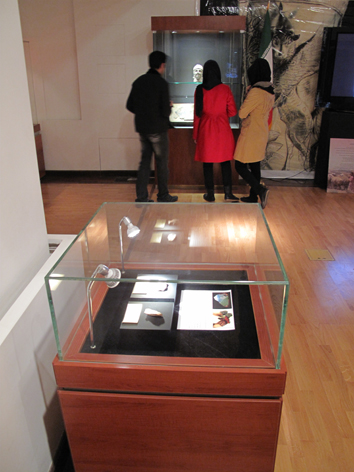Darband Cave on:
[Wikipedia]
[Google]
[Amazon]
 Darband Cave is a Lower Paleolithic site in the Gilan Province in northern
Darband Cave is a Lower Paleolithic site in the Gilan Province in northern
 Darband Cave is a Lower Paleolithic site in the Gilan Province in northern
Darband Cave is a Lower Paleolithic site in the Gilan Province in northern Iran
Iran, officially the Islamic Republic of Iran, and also called Persia, is a country located in Western Asia. It is bordered by Iraq and Turkey to the west, by Azerbaijan and Armenia to the northwest, by the Caspian Sea and Turkmeni ...
, located on the north side of a deep tributary canyon of the Siahrud River, a tributary of the Sefīd-Rūd River that flows into the Caspian Sea
The Caspian Sea is the world's largest inland body of water, often described as the world's largest lake or a full-fledged sea. An endorheic basin, it lies between Europe and Asia; east of the Caucasus, west of the broad steppe of Central Asia ...
.
The cave contains evidence for the earliest prehistoric human cave occupation during the Lower Paleolithic in Iran. Stone artifacts and animal fossil
A fossil (from Classical Latin , ) is any preserved remains, impression, or trace of any once-living thing from a past geological age. Examples include bones, shells, exoskeletons, stone imprints of animals or microbes, objects preserved ...
s were discovered by a group of Iranian archaeologists of the ''Department of Paleolithic'' of the National Museum of Iran
The National Museum of Iran ( fa, موزهٔ ملی ایران ) is located in Tehran, Iran. It is an institution formed of two complexes; the Museum of Ancient Iran and the Museum of Islamic Archaeology and Art of Iran, which were opened in 1937 ...
and ICHTO of Gilan. The site dates back to the late Middle Pleistocene
The Chibanian, widely known by its previous designation of Middle Pleistocene, is an age in the international geologic timescale or a stage in chronostratigraphy, being a division of the Pleistocene Epoch within the ongoing Quaternary Period. Th ...
period.
The presence of large numbers of cave bear
The cave bear (''Ursus spelaeus'') is a prehistoric species of bear that lived in Europe and Asia during the Pleistocene and became extinct about 24,000 years ago during the Last Glacial Maximum.
Both the word "cave" and the scientific name ' ...
and brown bear
The brown bear (''Ursus arctos'') is a large bear species found across Eurasia and North America. In North America, the populations of brown bears are called grizzly bears, while the subspecies that inhabits the Kodiak Islands of Alaska is ...
remains and sparse stone artifacts at the site indicates that Darband primarily represents a bear den. The co-occurrence of artifacts and bear bones does not imply human predation or scavenging. Because there are no clear cut marks, except a few burning signs on the bear bones, they probably accumulated through natural processes.
References
* * * 23External links
* Archaeological sites in Iran Former populated places in Iran History of Gilan Landforms of Gilan Province Caves of Iran Prehistory Prehistoric Iran {{NEast-archaeology-stub